#ethnic community
Text
The Commodification of Koreatown and Benefits of Tourism: “Old” and “New” Style Restaurants
Suha Cho
“Old” vs “New”:
Out with the old and in with the new? Or if it isn’t broken, why fix it? These are the questions asked when looking at the restaurants Koreatown, Los Angeles has to offer. From traditional style dishes to Korean-Italian fusion, Koreatown now has restaurants with “new” and “old” style options. The restaurant highlighting Koreatown’s “old style” cooking or better labeled as Korean traditional style cooking is Mapo Kkak Doo Gee. Mapo is a hole-in-the-wall restaurant that serves Korean comfort food and classic dishes such as Bibimbap (Mixed rice) and Budae Jjigae (Army stew). Although the interior is small in size, with seating for only 30 people, their menu offers a wide variety of traditional dishes with 37 options in total. Each order comes with eight different side dishes or Banchan, which is a staple in Korean dining. The customers consist of mostly elderly Korean people, ages 40 and up, and the workers are all Korean immigrants as well. With all factors included, this restaurant has many aspects within its interior, exterior, plating, and design that categorize under the traditional Korean style. The restaurant that represents a “newer” style of Korean cuisine within Koreatown is called Hanchic. Hanchic is a Korean-Italian fusion restaurant that serves dishes inspired by Korean and Italian recipes combined, with menu options ranging from Bolognese Mandu and Bulgogi Risotto. The restaurant is fairly new, opening in September 2020 and opening indoor seating in early March 2021. Similar to Mapo, Hanchic has seating for around 30 people but has seasonal menus that include their popular dishes year-round. Their demographic consist of the younger generation along with non-Korean individuals, fitting under the category of “new” style Korean cuisine.
Commodification and Tourism:
Despite the differences in style, both restaurants can be seen commodifying their cultural space, marketing within their diversity, and benefiting from the tourist industry. Looking at Aytar and Rath’s writing called “The Transformation of Ethnic Neighbourhoods into places Leisure and Consumption,” the writers focus on tourism and its inclusive benefits, offering job opportunities to a wide range of people within the community. This includes natives, immigrants, skilled, and unskilled, males, and females. However, they emphasize that not every individual involved in the tourism industry is automatically benefiting from this business, considering its high risks. Relating back to Mapo Kkak Doo Gee and Hanchic, the difference in style between the two restaurants and the gap in customer demographic affect the way each of them make business. For example, in an article called “A tale of two Koreatowns: Hip spots thrive while older businesses struggle amid Omicron” by Jeong Park, Mapo Kkak Doo Gee is mentioned for their struggles during COVID; “‘The cost of ingredients is also going up. But raising prices is difficult when customers are already staying away,’ said Beak of Mapo Kkak Doo Gee.” On the other hand, Hanchic took advantage of the COVID situation and signed a lease for their restaurant, later popularizing it all over social media. The owners of Hanchic have been putting the benefits of tourism to use, attracting tourists to Koreatown through social media, using the slogan “not so traditional Korean,” and using fusion-style dishes to attract non-Korean customers. In an article called “Hanchic: Where Bouillabaise meets Bulgogi” by Hadley Tomicki, the owner explains, “I wanted to portray Korean flavors in an aspect where I can meet in the middle with people that don’t know Korean food.”
Fusion and Gentrification of Asian Cuisine:
The topic of fusion restaurants, however, brings in concerns that authors Aytar and Rath mention in their writing about how immigrants are not always on board with the transformation of their space turning into tourist attractions, considering many of the shops could have been established with the intention of catering to the needs of the in-group only. The owners of Mapo Kkak Doo Gee are immigrants from Korea, while the owners of Hanchic were born here in the U.S. While Mapo uses traditional Korean styles and can attract Korean people along with tourists looking for authentic flavor, Hanchic’s fusion may attract more tourists rather than people within the community. This also brings into question the topic of fusion restaurants and the act of gentrification within cultural cuisine. In an article called “The Gentrification of Asian Cuisine,” the authors Katherine Ly and Manisha Wanniappa talk about the rise in popularity of Asian cuisine through social media. They emphasize the white-washing of Asian foods through Westernized Asian dishes, fusion restaurants, and food trends. However, the article fails to mention the question of whether or not Asian fusion restaurants owned by Asian people, are partaking in an act of gentrification of Asian cuisine. Or is this considered a way in which they are using recipes authentic to an Asian style of cooking and adding a twist? If so, who then are they trying to appeal to when serving fusion dishes, and does it positively or negatively affect the cultural space within the community? Despite these aspects, Mapo Kkak Doo Gee and Hanchic are both commodifying their cultural space in different ways with the benefits of tourism within Koreatown, Los Angeles.
#koreatown#ktown#losangeles#gentrification#food#ethnic culture#ethnic community#ethnic food#commodification#tourism#mom and pops
1 note
·
View note
Text
I love you people going into "useless" fields I love you classics majors I love you cultural studies majors I love you comparative literature majors I love you film studies majors I love you near eastern religions majors I love you Greek, Latin, and Hebrew majors I love you ethnic studies I love you people going into any and all small field that isn't considered lucrative in our rotting capitalist society please never stop keeping the sacred flame of knowledge for the sake of knowledge and understanding humanity and not merely for the sake of money alive
#classics#mythology#ancient greek mythology#ancient roman mythology#comparative literature#latin#hebrew#ethnic studies#fuck capitalism#communism#i love my useless degree idc#academia#university#dark academia#Greek#philosophy#liberal arts#humanities#women and gender studies#cultural anthropology
41K notes
·
View notes
Text

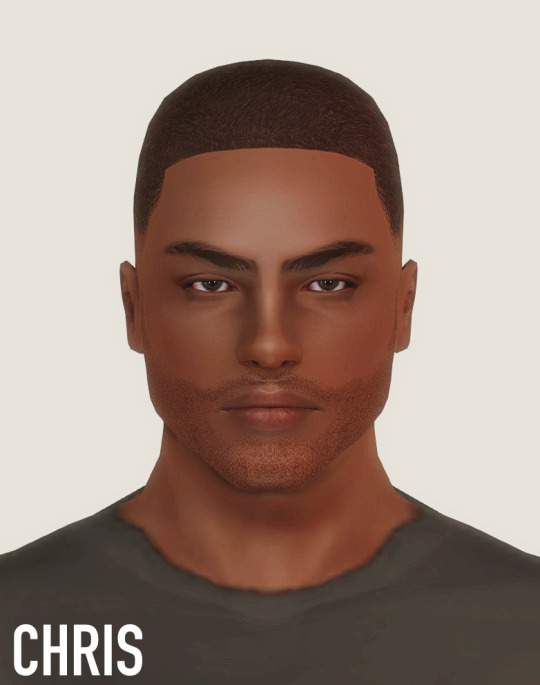
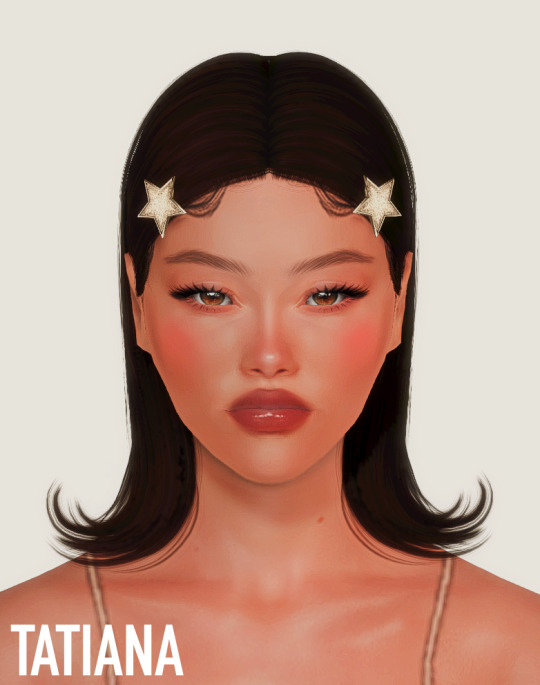
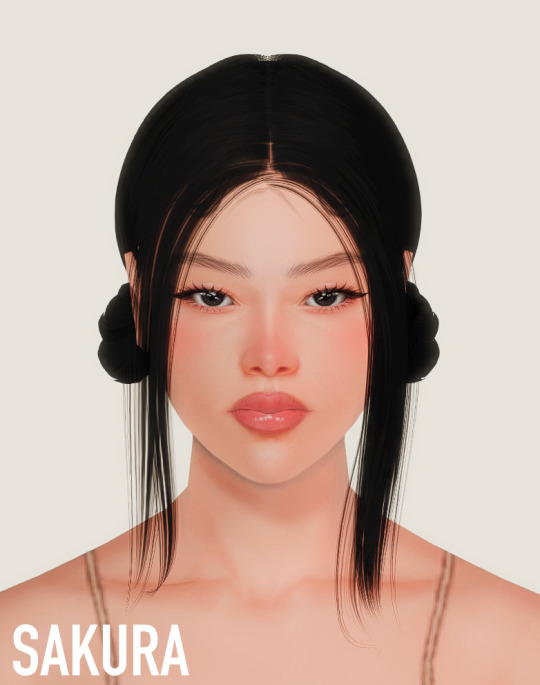
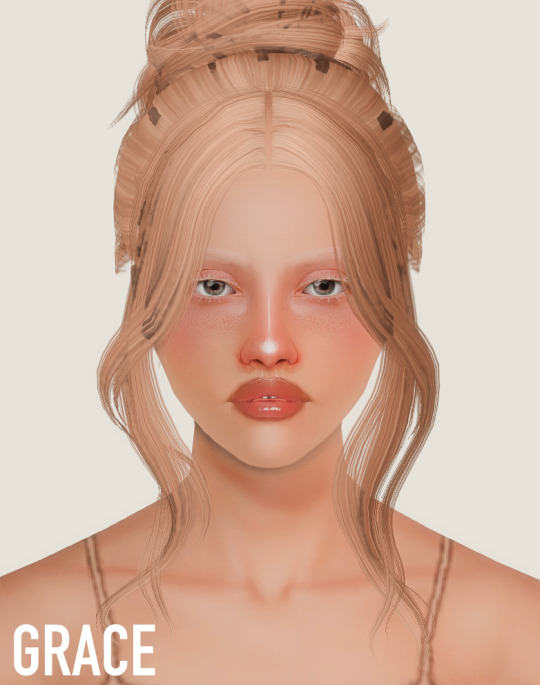



BASE SIMS #4
-> They are not dressed, it's only base sims so you can choose the outfits and the body structure, they only have hair and makeup as you see them :) (I put basic EA clothes) I finally made some male base for you guys haha
GIULIA // CHRIS
TATIANA // SAKURA
GRACE // NICK
MASSIMO // EVA
(you just have to put the .package in your Mods folder)
Let me know if you have any issues
#simblr#sims 3#ts3#my sims#sims 3 screenshots#sims 3 simblr#sims#thesims3#ts3 screenshots#sims3#ts3 simmer#the sims 3 cc#the sims community#the sims cc#sims 3 simmer#ts3cc#cc#download#sims3cc#cas#base#ethnic#hijab#light skin#asian#afro#man#male
556 notes
·
View notes
Text
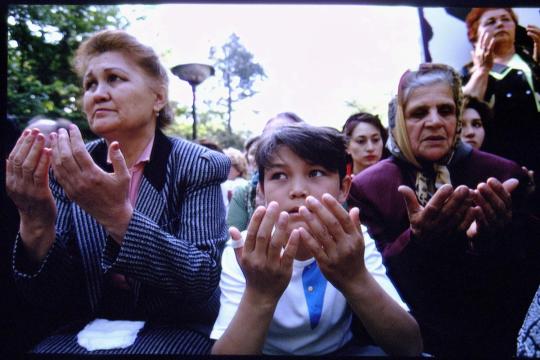
1994: Crimean Tatars mark the 50th anniversary of russia deporting their entire population from their homeland. From the 18th-20th of May 1944 the Tatars were loaded onto cattle trains and removed from their native land.
2024 is the 80th anniversary of Stalin's Crimean genocide.
Since 2014 Crimea has again been occupied by russia.
#settler colonialism#vintage ukraine#ukrainian history#colonialim#russia#imperialism#on this day#crimea#crimean tatars#communism#stalin#putin#ethnic cleansing#genocide#soviet union#russian history#communist
508 notes
·
View notes
Text
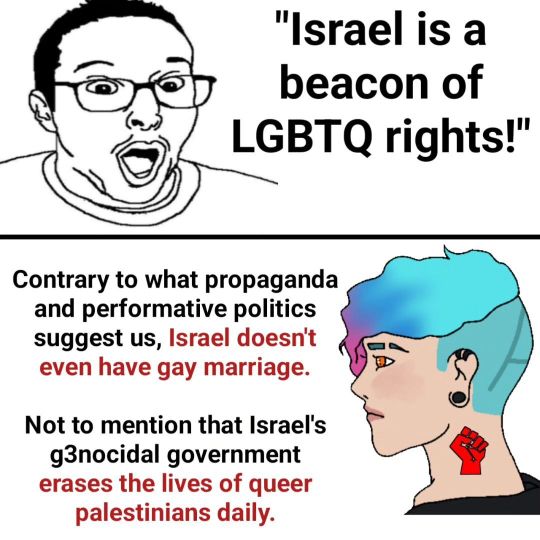
#lgbtqia#lgbtq community#lgbt pride#nonbinary#lesbian#sapphic#lgbtq#queer#gay girls#nonbinary lesbian#israel#gaza#west bank#isreal#genocide#zionistterror#antizionism#jewish antizionism#zionistcensorship#jews for palestine#israelis#war crimes#ethnic cleansing#western imperialism#nakba
427 notes
·
View notes
Text
Rashida Tlaib
On why the ruling class hates solidarity
#tiktok#Rashida Tlaib#war crimes#ethnic cleansing#detroit#colonialism#colonization#collective action#community building
591 notes
·
View notes
Text

#woke agenda#wokeness#woke liberal madness#woke is a joke#wtf is going on#lgbtq#lgbt pride#lgbtq community#transgender#trans woman#donald trump#kamala harris#trump 2024#democrats#vote kamala#kamala 2024#kamala for president#vp kamala harris#trump#sports#national anthem#usa#ethnicity#workplace#jobs#constitution#offended#monty python#feelings#emotions
78 notes
·
View notes
Text

i hope i'm not too late to offer up my miku! i've been so happy to see all the muslim mikus floating around, so here's a miku dear to my own heart: hui chinese miku!
#vocaloid#miku worldwide#every country's miku#miku international#hatsune miku#miku hatsune#artists of tumblr#miku#happy birthday miku#hui people#hui chinese#muslim chinese#doodells#my art#ok to rb#PLEASE rb! i tried so hard here!!!#for context: im pretty sure im han chinese! definitely not hui but my mother's family home is in an area with a prominent and much valued#hui community! i so value those precious memories#and i really wanted to pay homage while designing an awesome miku!#pls dont let this flop hehehe..... look at how beautiful she is........#you want to learn about china's ethnic minorities so bad........ oohhhh#waves pendulum at you
133 notes
·
View notes
Text
Got bored so I drew smg3 in both Nigerian Prince and Princess fits



I know I do personally HC him as Nigerian like me, but I mainly do that because I kin him idk

#smg4#art#smg3#smg4 smg3#smg4 fanart#smg3 fanart#digital art#yippee#idk I just enjoy drawing outfits and playing around with ethnicities#I don’t see much Nigerian media in the smg4 community
104 notes
·
View notes
Text

had the idea of a human au for my chicken run self insert (and all the characters really, more to come on that) for a while now and I’m so glad I finally was able to fully get their designs out on paper (or I guess screen)
#I wanted to give Daphne a very Audrey Hepburn Dior look mixed with a bit of southern cottagecore since she is very lady like but comes from#the country so I hope that translated ^^;#also designing Mac and Ginger was just such a blast I’m really happy with how they both turned out#I feel like I hc Ginger as a mixed girl. like back then it was really common for mixed race people to try and conceal the side of them that#was more ‘ethnic’ which is really sad so I think Ginger would happily embrace that side of herself#as an act of rebellion also just as a general form of self love bc I think she’s always given off the vibe that she’s just very secure#of herself and the way she is/looks#self shipping#self ship#self ship community#self ships#self insert#self ship art#chicken run#mac#ginger#aardman#lovebirds ♥️🐔#oc x canon#chicken run oc#oc#chicken run self insert
163 notes
·
View notes
Text
Jamal Al-kafarnah, 5 months old baby, died out of hunger. Genocide via Starvation is a real thing.
The Israeli people holding protests at the border refusing aid trucks to enter need to take a look at what they're protesting for. Although aid trucks weren't entering at all even before the protests, they stay put outside of the border for weeks, maybe months.
#this isn't even the only reported case of death by starvation or death by hunger#babys this age not knowing how to talk#know only how to communicate by crying imagine how long jamal had to cry because he's so hungry#and how his parents had to hear his cries helplessly not able to do anything for their child until he died#because there is no food or milk for him what world are we living in#palestine#gaza#israel#important#current events#free palestine#ethnic cleansing#gaza strip#gaza under attack#free gaza#video#Palestinian lives#we are not numbers
259 notes
·
View notes
Text
Little Armenia
Zoe Deyermond
Little Armenia is an enclave located in Los Angeles, right next to Hollywood, named after the prominent Armenian community that settled in the area after the Armenian genocide that began in 1915. This small area of Los Angeles has grown throughout the decades to reflect Armenian culture and to preserve the history of those that live there, ultimately making Little Armenia the place with the largest Armenian population outside of Armenia itself (Mirzoyan). One of the most prominent attributes to Armenian culture is the emphasis on hospitality and etiquette for guests of a space. This could potentially be accredited to the culture’s faith in Christianity, and the belief that guests are sent as a gift from God (Bock). Aside from these cultural and moral beliefs for Armenian people and their communities, there also remains the fact that the city of Los Angeles holds a prominent and widespread population of people experiencing homelessness and a lack of hospitality. My goal in traveling to Little Armenia, with these ideas in mind, was to examine how people interact with the space as well as to see the types of people that are included in these spaces. Alongside this, I also interacted with several business owners in order to get a better understanding of how residents of the community might interact with non-residents or unhoused individuals.
The primary concern with the power dynamics of accommodating such a large population of unhoused and mentally ill individuals in a city such as Los Angeles would be the ever present systems and constructions of oppressive practices. Such practices can be observed through the use of exclusive architecture, monetary coercion, or blatantly destructive actions like “clean-ups” around the city. Practices like this that dismantle and further diminish the livelihood of unohoused individuals is not only cruel and inhumane, but largely counterproductive as it wastes resources on exclusionary measures instead of offering any real assistance. This being said, the responsibility to do better in terms of providing support for unhoused individuals should not solely fall onto the backs of local business owners and residents, but it is a good place to start in order to get attention from bigger organizations that only seem to exacerbate the issue. Focusing on Little Armenia as a foundational understanding of how the homeless population could be better accommodated in Los Angeles, I chose to travel to three different businesses, as well as the local church and the murals located around Winona Blvd.
My first impression of Little Armenia as a space was how clean and well kept the outdoor environment was. The sidewalks were relatively clean in comparison to the space around campus, and trash was seemingly nonexistent. This was impressive to me because the sidewalk space itself seems to be a fraction of the size that it is in Hollywood, but nonetheless seemed to be well taken care of. The first business that I walked to was a local coffee shop called Obet & Del’s, which serves a wide variety of coffees and teas, and also provided a welcoming atmosphere with open doors and open concept seating. The barista was very friendly and talkative, and I asked him to make me his favorite coffee. I was given a Filipino iced coffee, which was delicious, and I sat down in one of the available seats to observe the space. During my time here, there were about 20 other customers that entered and left, with about 5 of them utilizing the open seating. The demographic of these customers were mostly young adults. A good portion of them appeared to be college students, but the vast majority appeared to be local residents and regulars to the shop. The employees were all very friendly with each of the customers and even brought their drinks to their tables, if they chose to sit down. Another thing that I noticed about this business was how they would greet each of the customers upon entrance, as well as say goodbye and thank you when people left. I thought this was really refreshing and not something you would experience in a chain coffee shop.
After I left, I decided to go visit the local church, which is called St Garabed Armenian Church, and is located on Alexandria Ave. On my way there, the tidiness of the space was consistent, and I was unable to find but one tent on the sidewalk. Instead, unhoused individuals seemed to navigate and utilize the space just the same as everyone else and were even welcomed into many of the spaces, such as thrift stores or places with bathrooms. I feel this contrasts much of my experience thus far in Los Angeles where the homeless individuals are frequently excluded from these common areas. The benches were even more inclusive, as many of them were free of bars or handles and were being utilized by unhoused individuals. Upon arriving at the church, the front doors were unfortunately locked, however, I did spend a good amount of time outside of the church to take in the architecture and observe the overall surroundings. Much like the rest of Little Armenia, this space was very clean and well maintained. One aspect of the church that I observed was the implementation of outdoor, public water fountains for drinking. They were located at the front entrance of the church and were fully functional, providing access to clean water for people that might not otherwise have it. Once again, a very drastic difference to other areas around Los Angeles that make the best attempt at deterring unhoused people.
Next, I traveled back the way I came from and decided to eat at a local Armenian restaurant called Carousel’s. I went here alone, but this did not impact the positive experience that I had. I was seated at a table in the middle of the restaurant where I was best able to take in the surroundings. The space was very cozy and relaxing, both with the arrangement of the tables, the music, and the friendliness of the staff. There were about 15 other people dining at the restaurant at this time, with one large group of about eight guests, and two smaller groups at other tables. Although I was alone, I did not feel judged by any of the people here, which I really appreciate. I decided to order an eggplant dish, which was called the Mousakka plate, and it came with an Armenian style salad, an arrangement of cheeses and vegetables, pita bread, and a choice of one side. I decided to order the rice as my side, and the waitress was mindful to ask me about my diet preferences. I told her that I was a vegetarian, and she notified me that the rice contained chicken broth and brought me a plate of fries instead. My food arrived quickly and I was frequently checked on by multiple staff members about the quality of my food. There were outdoor seating options available, as well as a restroom open to the public, although nobody used it during this time. I packed up the remainder of my food to go, as the portions were quite large, and started to head back towards campus.
On my way back, I came across the murals located around Winona Blvd, which depict references to the Armenian genocide in 1915. One of the most prominent murals was the one called We Are Still Here, which was painted in 2015 and appears to showcase an older Armenian woman bound by chains at the wrist, releasing the tortured spirits from the past. Her mouth is covered with red cloth that reads “1915” across her lips. I spent a good amount of time here as well, taking in the artwork and appreciating the effort that is put into maintaining these large scale murals. The eyes of the woman in the painting visibly carry a lot of pain and suffering and I thought this was a really poetic way to honor and commemorate Armenian history and the residents of this space. Finally, my last stop in Little Armenia was a chandelier shop located on Hollywood Blvd, which was called George’s Lighting Plus. At first, I entered the shop because I was attracted to the beautiful chandeliers and lamps, but I stayed much longer than I anticipated to speak with the man working inside. He went into great detail about the lamp and chandelier services that they offer, as well as brought me around the store to show me some of his favorite pieces, and other works in progress. I was really touched by his enthusiasm over his lamps as well as his eagerness to welcome me into the store. I walked around a bit, thanked him for his customer service, and left with some really lovely pictures. Overall, my experience in Little Armenia was very positive and I witnessed more than one instance of accommodation for non residents and unhoused people. I think that other areas around the city should look to Little Armenia as an example of being able to keep a space clean without totally excluding those in need.
Bibliography
Bock, Gregory L. “The Philosophy of Forgiveness.” vernonpress.com, 2019. https://vernonpress.com/index.php/file/6661/d4f20d145841a3af4df4e73b6ef881de/1537944706.pdf.
Mirzoyan, Inna. “The Armenian Ethnic Enclave of L.A.” Armenian Los Angeles | Department of Sociology | Michigan State University, June 2, 2022. https://sociology.msu.edu/news/inna-essay.html.
#little armenia#losangeles#ethnic community#ethnic enclave#ethnic culture#ethnic neighborhood#ethnic food#neighborhood#diaspora
0 notes
Text

#genocide#al shifa hospital#communism#socialism#anti capitalism#anarchy#twitter post#leftism#tweet#anti zionisim#ethnic cleansing#free gaza#war crimes#idf terrorists#fuck the idf#idfb#gaza war#isreal#hamas#israel#hostages#mass graves
57 notes
·
View notes
Text






BASE SIMS #3
-> They are not dressed, it's only base sims so you can choose the outfits and the body structure, they only have hair and makeup as you see them :) (I put basic EA clothes)
AYA // MERCEDES
RANIA // BELLA
CASSY // KIMI
(you just have to put the .package in your Mods folder)
Let me know if you have any issues
#simblr#sims 3#ts3#my sims#sims 3 screenshots#sims 3 simblr#sims#thesims3#ts3 screenshots#sims3#ts3 simmer#the sims 3 cc#the sims community#the sims cc#sims 3 simmer#ts3cc#cc#download#sims3cc#cas#base#ethnic#hijab#light skin#asian#afro#ginger
531 notes
·
View notes
Text
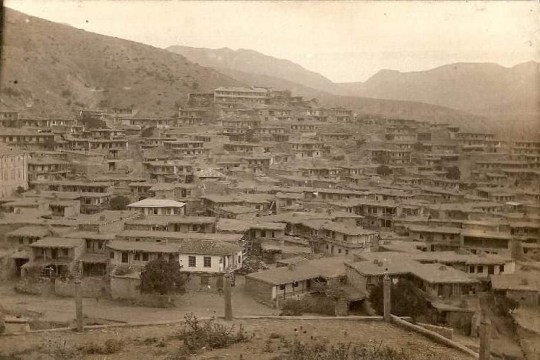
1945: The village of Uskut, Crimea after Stalin's deportation of the entire native population of the Crimean Tatars from the 18th-20th of May 1944.
russian colonisers had yet to move into the houses.
#settler colonialism#russian history#ukrainian history#crimea#communism#ethnic cleansing#genocide#stalin#stalinism#crimean tatars#20th century#ukraine#russian colonialism#colonialism#abandoned#soviet union#ussr#1940s#crimea is ukraine
317 notes
·
View notes
Text
Proship artists will literally do anything but get the character/actor's ethnicity right

#“its just art i can do what i want” oh okay so i might as well draw you pregnant with twins its just art after all#moonknight#moon knight#marc spector#steven grant#jake lockley#went on twt today#a lot of mostly korean artists keep on defending themselves#most of them are proshippers btw#🫠🫠🫠🫠🫠#awareness#X#twitter#art community#ethnicity#snowbunnied#it appears... you have been snowbunnied 😞#miguel ohara#spiderman#2099#miguel ohara x reader#moonknight x reader
50 notes
·
View notes